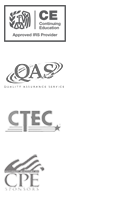
Due to the spread of COVID-19 and the temporary closure of many Prometric testing centers, the AICPA is implementing continuous testing for the CPA Exam beginning July 1, 2020. This means that candidates can take their exams at anytime during the year, instead of only during the 4 previously specified testing windows.
CPA candidates who fail a section will no longer need to wait until the next testing window to retake it. With continuous testing, candidates can simply apply for a new Notice To Schedule (NTS) and retake the section as soon as they receive it.
Most states and jurisdictions will begin continuous testing on July 1st, with the exception of South Carolina which is expected to begin sometime in 2021.
An emergency testing period has also been created by extended the Q2 2020 testing window from June 10, 2020 to June 30, 2020. NASBA, along with the AICPA, has extended all NTSs to September 30, 2020, allowing candidates with a current NTS to benefit from the change to continuous testing.
On March 27, 2020, the Coronavirus Aid, Relief, and Economic Security Act (CARES Act) was signed into law. The provisions in the CARES Act most directly impact potential subject matter eligible for testing in the REG and FAR sections. Changes to tax law resulting from the passage of the CARES Act will be eligible for testing beginning October 2020.
The AICPA has studied what CPAs actually do on a day-to-day level, and on the skills and qualities that the marketplace wants from them. They've realized that the exam needs to do better at testing higher order thinking: critical thinking, professional skepticism, analysis, evaluation, communication and research.
This will result in a new CPA exam that is less weighted on memorization and more weighted on a broader range of skills as applied to real-world tasks.
Starting in 2017, the CPA examination will include more task-based simulations and less multiple-choice questions. To accommodate this change, all sections of the CPA examination will be 4 hours in length. So be prepared for a total testing time of 16 hours.
But, it is not all bad news here. A standardized 15-minute break will be included for each section. This is time you can spend to relax and collect your thoughts before continuing through the examination. This time will not count against your testing time.
Here is how the question count is changing:
| Multiple Choice Questions | Task-Based Questions | Written Communication | ||||
| Section | Current | 2017 | Current | 2017 | Current | 2017 |
| AUD | 90 | 72 | 7 | 8 | - | - |
| BEC | 72 | 62 | - | 4 | 3 | 3 |
| REG | 90 | 66 | 7 | 8 | - | - |
| FAR | 72 | 76 | 6 | 8 | - | - |
The previous CPA Exam focused on two main skills, "Remembering & Understanding," and "Application." The 2017 examination expands this to cover the higher-order skillsets of:
The past CPA examination equally weighted Remembering and Understanding and Application level skills throughout the four examinations. The 2017 changes will adjust the weightings to include the new higher order skills.
| AUD | BEC | REG | FAR |
|---|---|---|---|
| Evaluation (5-10%) | Analysis (20-30%) | Analysis (25-35%) | Analysis (25-35%) |
| Analysis (15-25%) | Application (50-60%) | Application (50-60%) | Application (35-45%) |
| Application (30-40%) | Remembering & Understanding (15-25%) | Remembering & Understanding (10-20%) | Remembering & Understanding (25-35%) |
| Remembering & Understanding (30-40%) |
As of July 2016, there is a new kind of task-based simulation on the CPA exam, the Document Review Simulation.
This simulation sets up a given problem to solve, and then provides the candidate with documents—legal letters, conversational transcripts, bank statements, and other documents encountered in the business world. The challenge is to separate the important information from the unimportant information, given the situation at hand. This is based on real-world challenges regularly faced by CPAs in the workplace.
The AICPA is doing away with CSOs (Content Specification Outlines), and instead will publish blueprints.
The idea behind blueprints is to be a bit clearer about what might be covered on each exam section.
In 2017, four task-based simulations were added to BEC. That means BEC is now a three part section that includes multiple-choice questions, task-based simulations, and written communication.
The BEC and REG sections will each become an hour longer. Each will cost an additional $20 to cover this extra time.
The new Document Review Simulations and the increased emphasis on task-based simulations are both worth preparing for.
Overall these changes are to be welcomed. By responding to what the marketplace wants, the AICPA is working to keep the accreditation highly valued in the wider world. That's in all our interests.
Of course, you might be cursing the fact there's more now to study for. But this has an upside too: you're less reliant on the multiple choice questions for the score you need to become a CPA.
Prepare the right way and make these changes work for you. See how Fast Forward Academy’s cutting-edge CPA exam review can help you pass the first time.